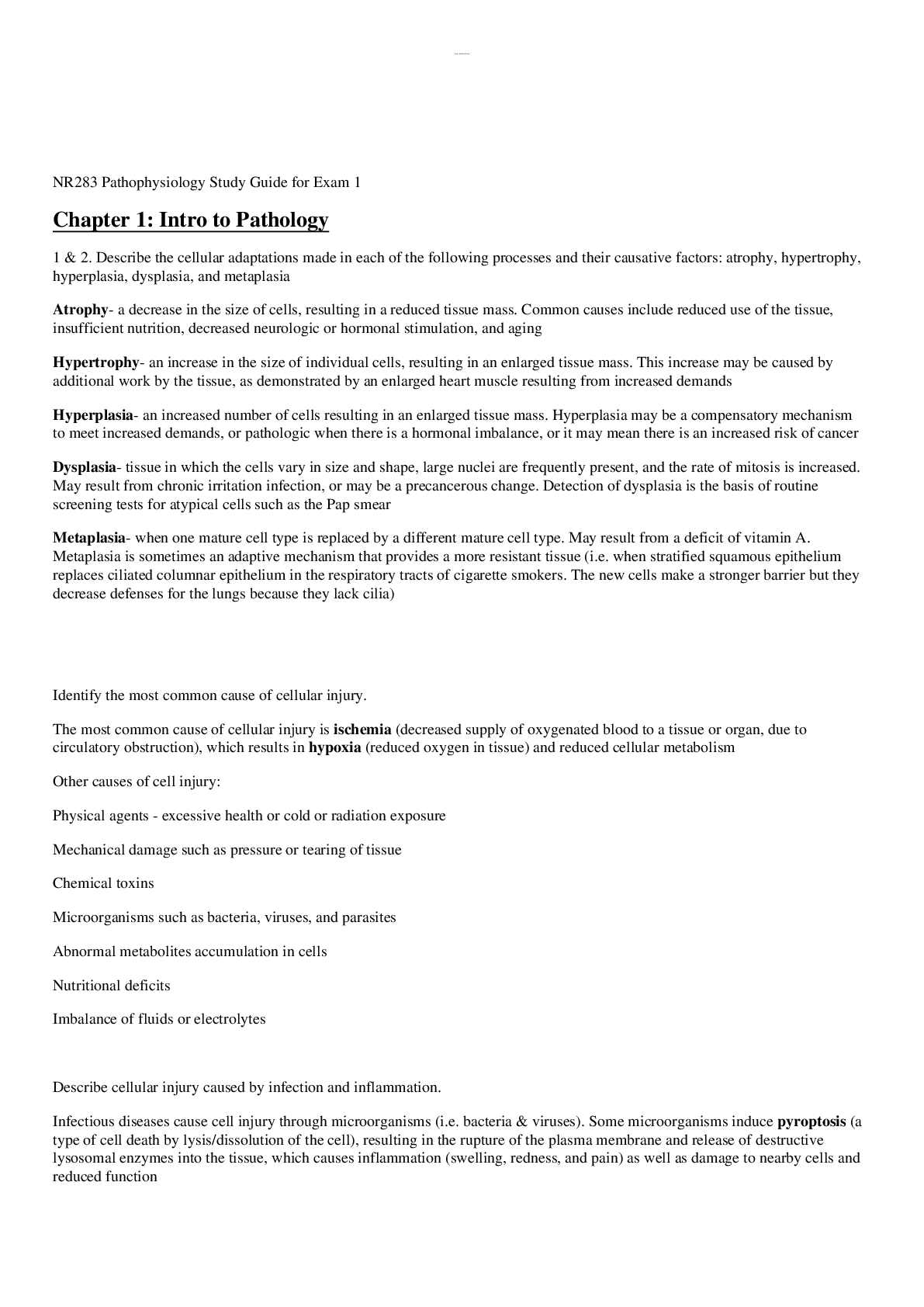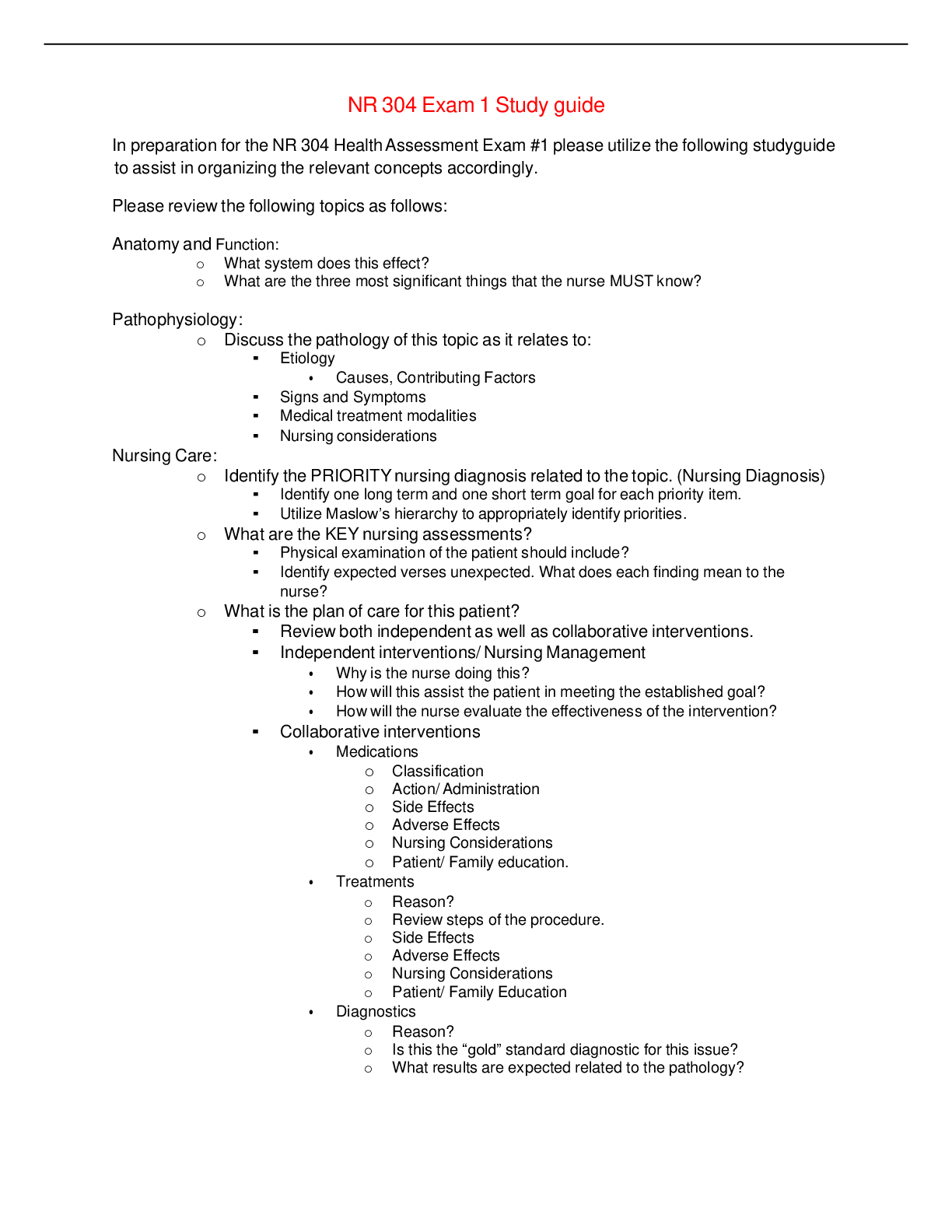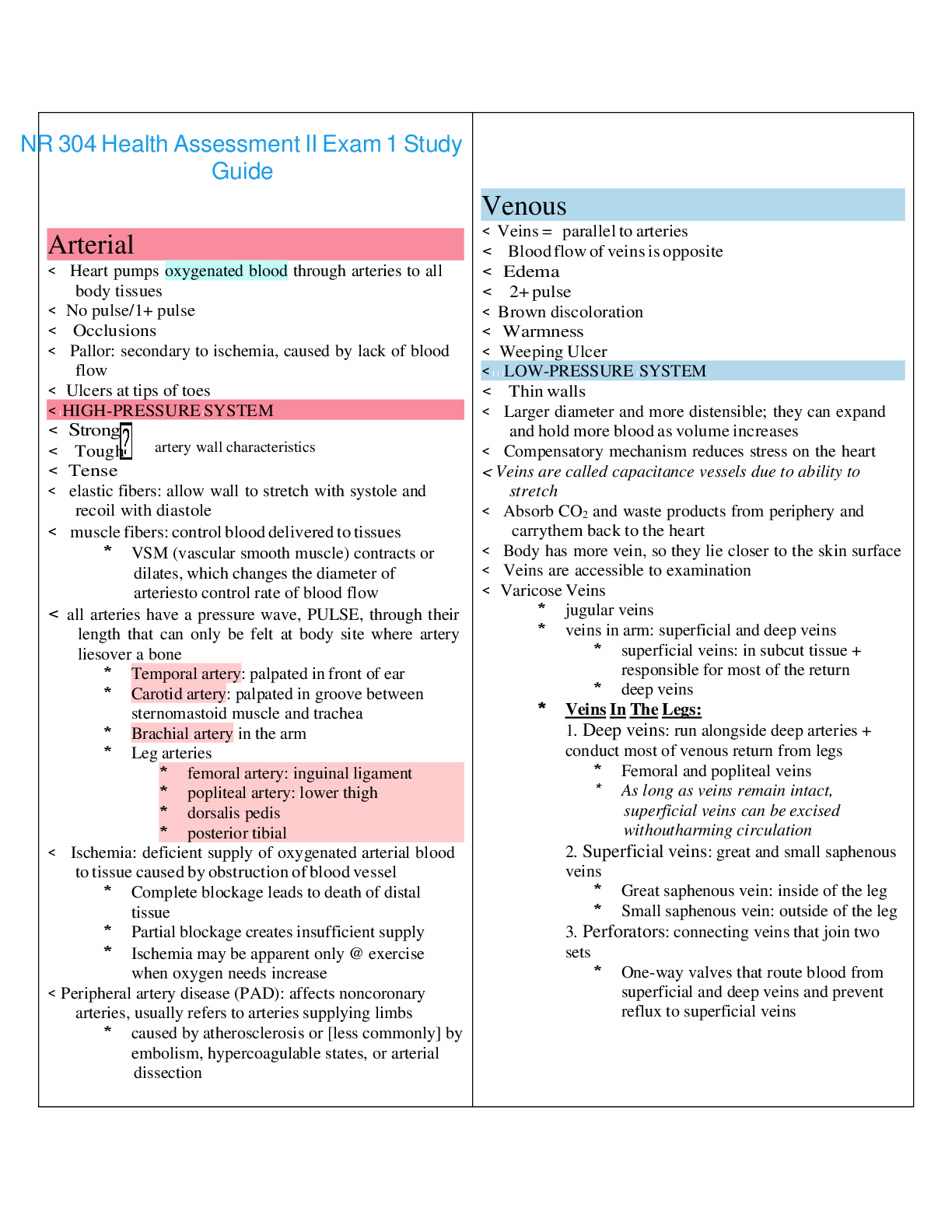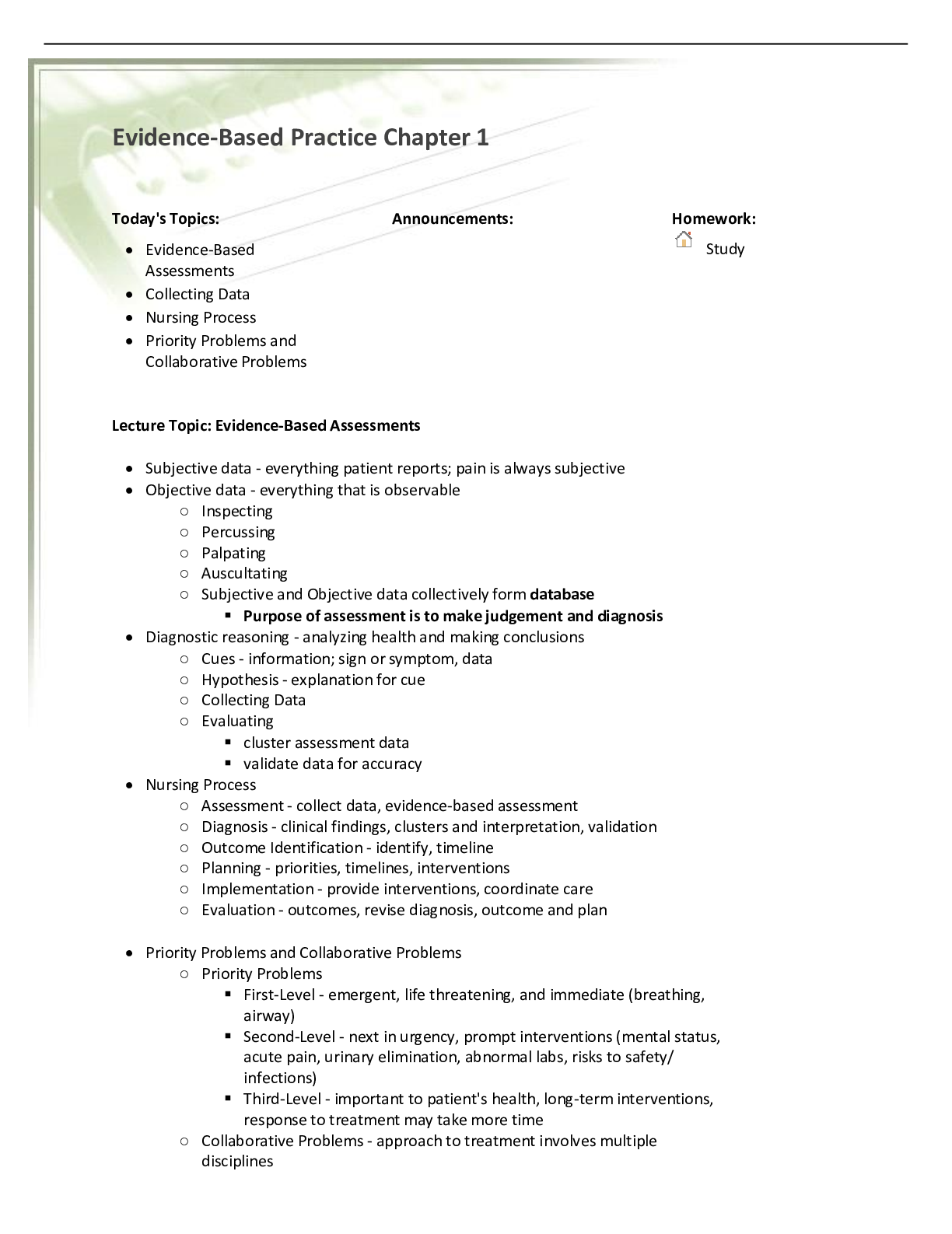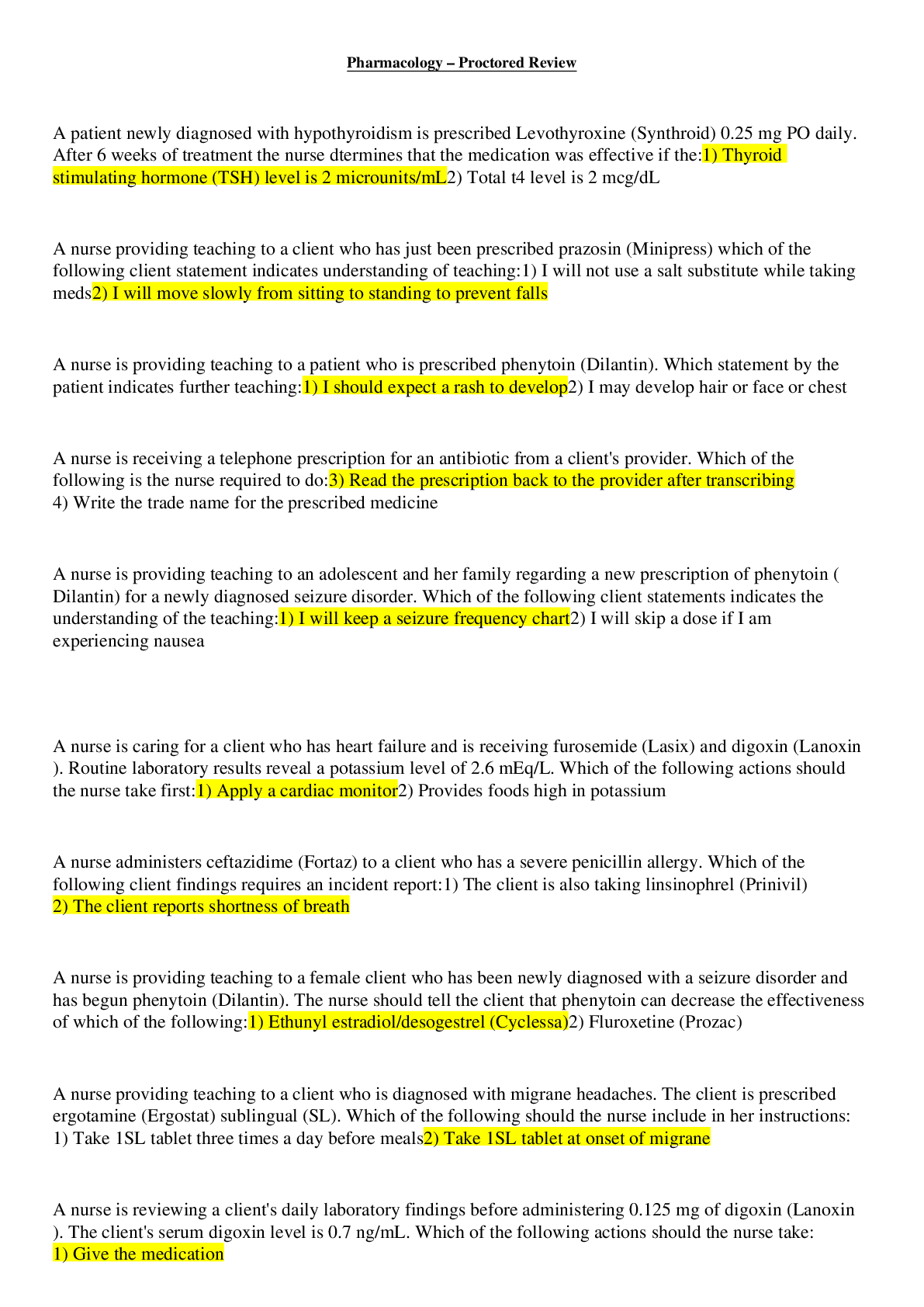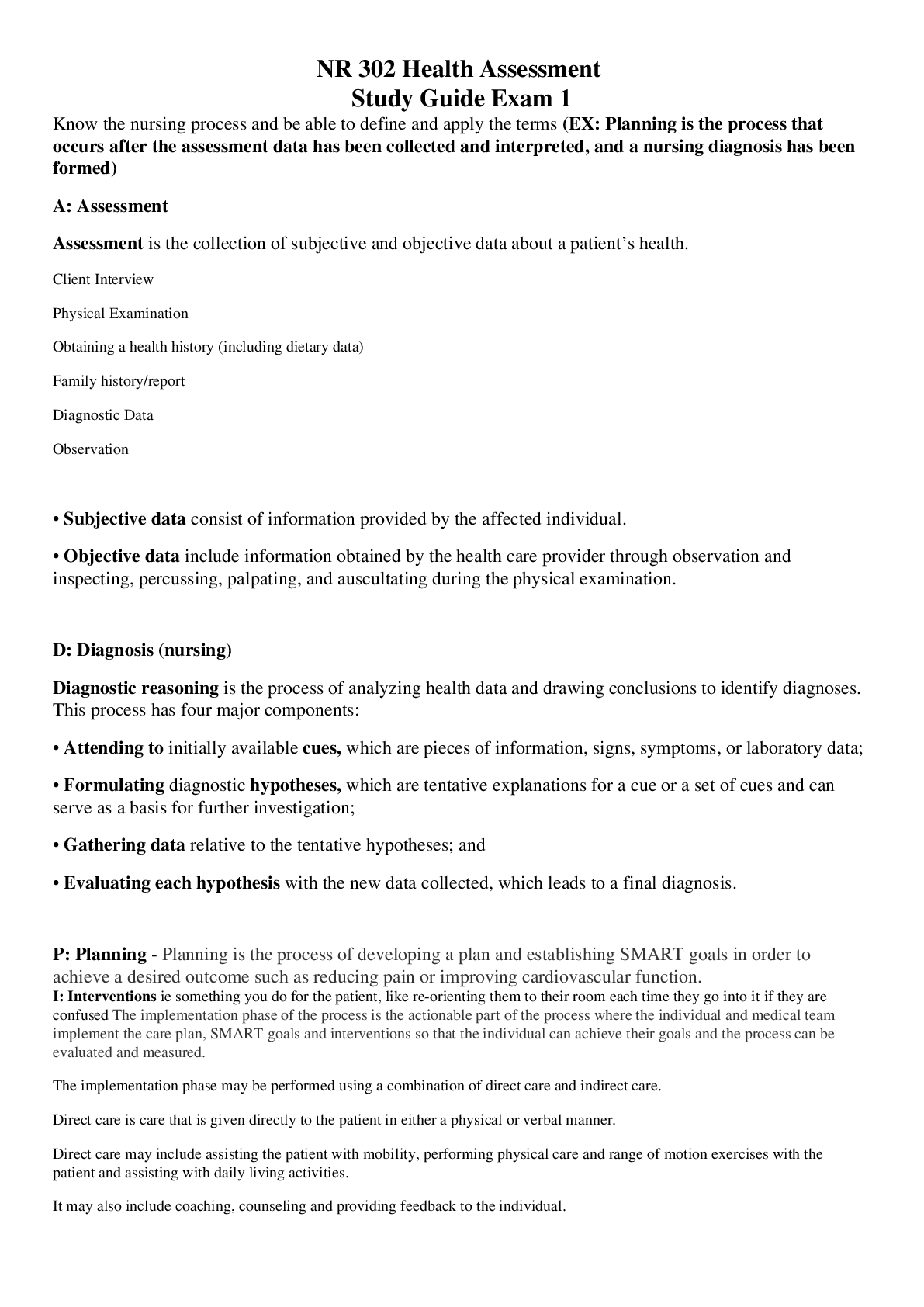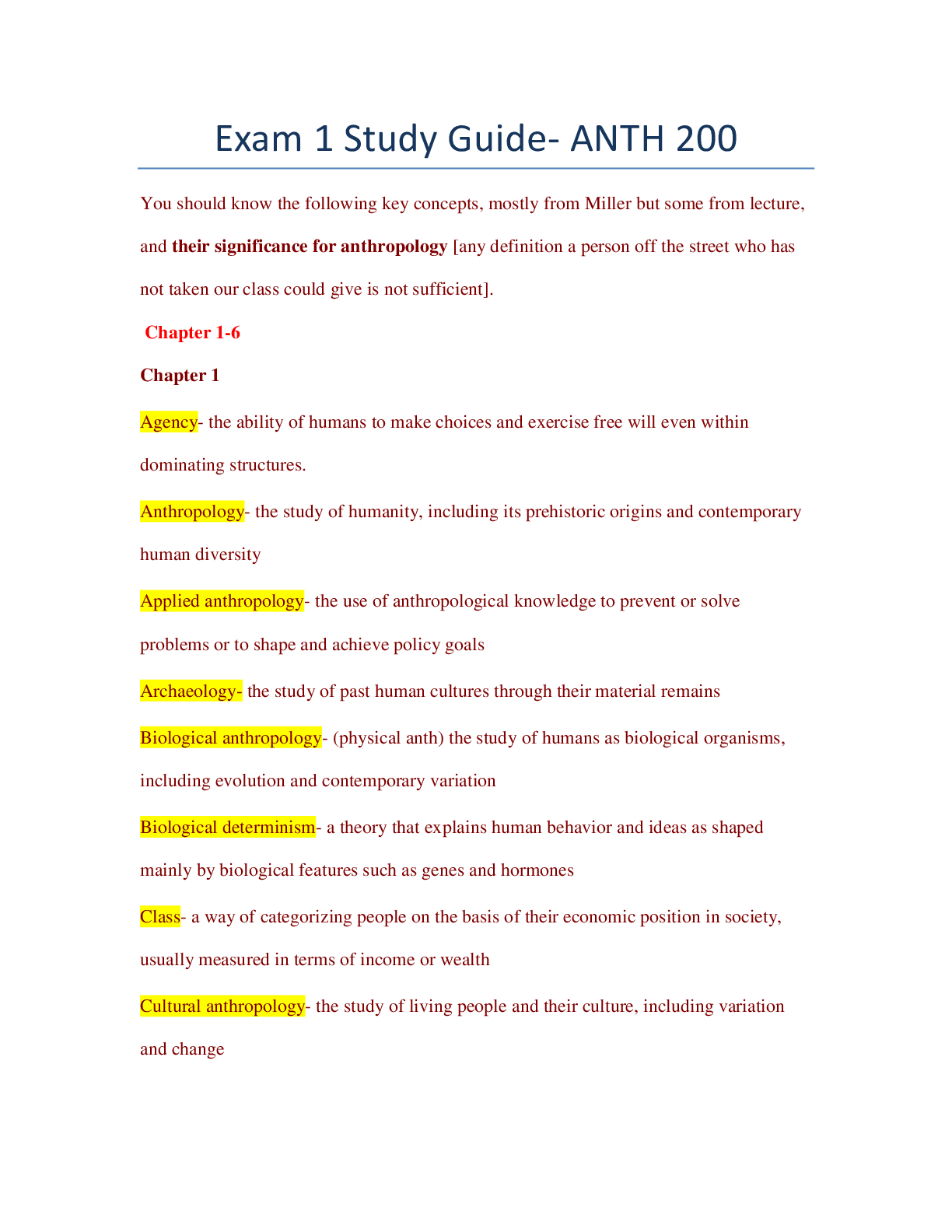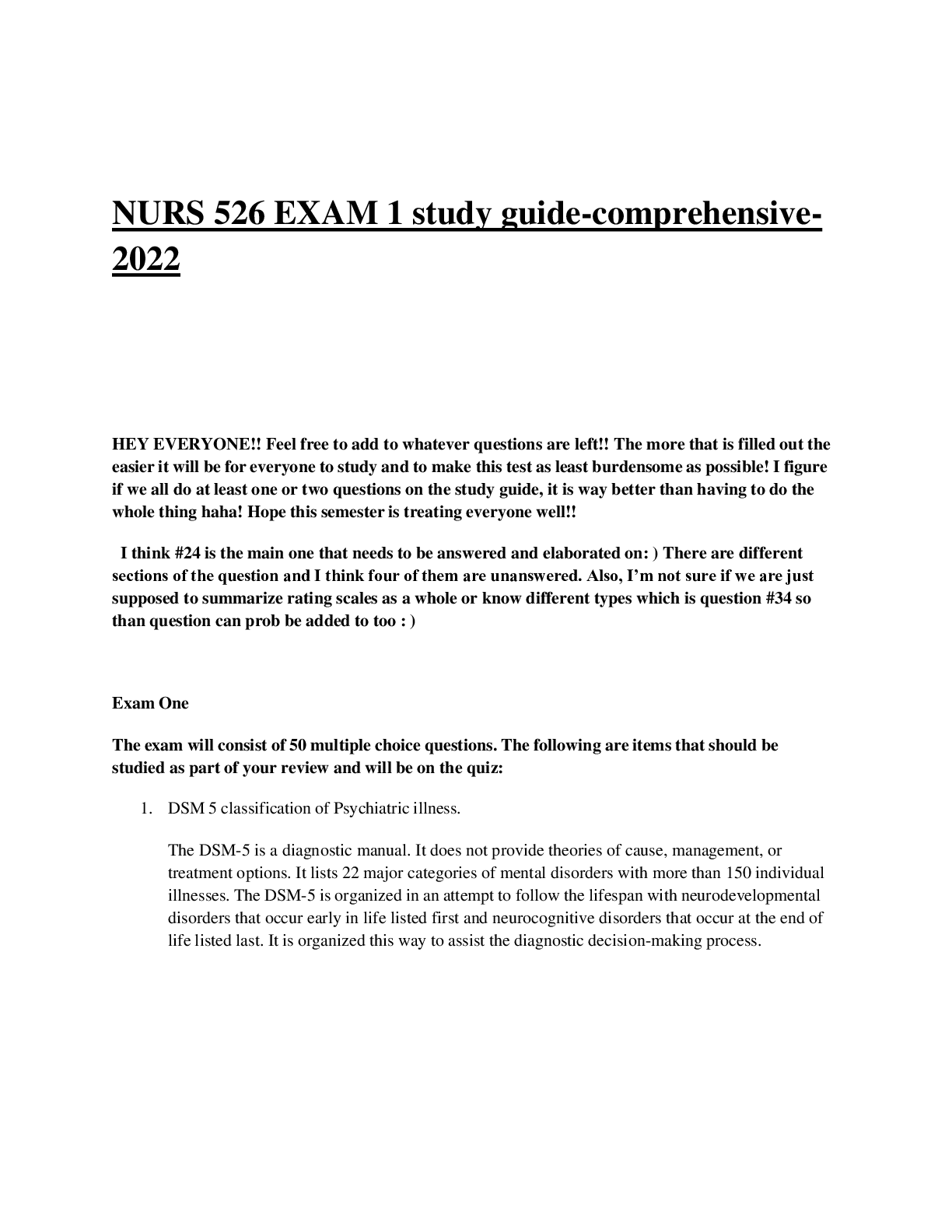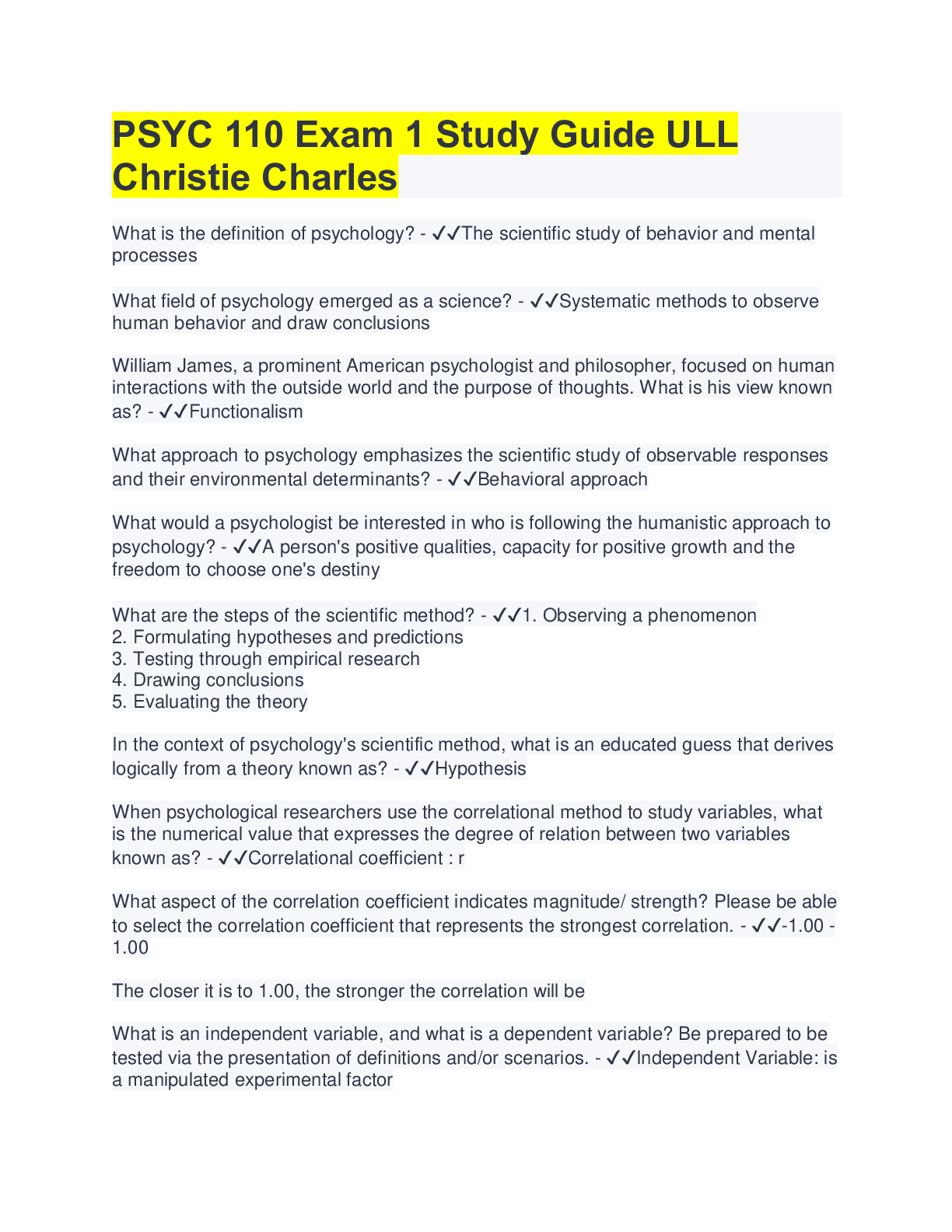*NURSING > STUDY GUIDE > NURS 3410 Exam 1 Study Guide (2020 Updated) – University of Arizona | Clinical Pharmacology (All)
NURS 3410 Exam 1 Study Guide (2020 Updated) – University of Arizona | Clinical Pharmacology
Document Content and Description Below
NURS 3410 Exam 1 Study Guide (2020 Updated) – University of Arizona Clinical Pharmacology 40 questions (35 Multiple Choice & 5 Multiple response) Chapter 1: Nursing Process & Rights of Med Ad... ministration • Components of the nursing process & correct examples of each step o Assessment (slide 4-5) ♣ The initial evaluation of the patient to collect subjective information regarding reason to seek care ♣ You want to collect data about the patient and what type of medications they are current taking ♣ Will be collecting subjective (what the pt. tells you i.e. Pain in leg, history of health/past events, allergies) and objective (things that can be measured i.e. vital signs, listening to the lungs and irregular heart rate) • Example: Patient is experiencing low blood pressure and fainting upon standing. You would assess and ask questions like: Has this happened before?, Do you have a history of heart disease or any related illnesses?, If you have any medications you take for it, what are they?. • Check the pt’s medical chart if been to hospital before. Look for any medication the pt has been ordered in the past or currently or contact a family member o Nursing diagnosis (slide 6-7) ♣ 3 parts • Human response (diagnose focus that is the root of the concept) • Factor related to response (with or due to something) • List of data supporting diagnosis (this is what happened or is currently happening) ♣ NANDA (North American Nursing Diagnosis Association) • List of nursing diagnosis focus recognized by profession organisms o Deficient knowledge o Risk for injury o Noncompliance o Disturbances or imbalances in bodily functions as it relates to medications o Spiritual distress - - - - - - - - - - - - - - - - - - - issing: contact provider, never assume; always need to clarify, even if you know that a med is supposed to be taken by IV and not PO it still needs to be documented by the provider in the order which route to take Chapter 2: Pharmacologic Principles: ♣ Brand vs Generic Example medication: treats GERD and damaged esophagus o Brand name: chemical composition and molecular structure ♣ Trademark created by the drug company made to be marketable and easier to pronounce and remember • Protonix o Generic name: reflects chemical structure; a hint to what drug class it is in (will see on exam questions) ♣ Official name assigned by the USAN council; harder to pronounce and longer ♣ Biosimilar: Copies already authorized biological (made up of living organisms) product something that is naturally produced in the body • Pantoprazole • Therapeutic equivalence (NOT to be confused with bioequivenency) o A drug that has the same therapeutic effect on the body, same class of drugs, even if they don’t have the same active ingredients. o Can be a hospital or patient preferred drug (pt. could respond to one drug better than the other) ♣ Pantoprazole vs. Omemprazole (Brand: Zegerid) ♣ Characteristic/Advantages & Disadvantages of various routes o Enteral ♣ Characteristics of GI tract to be activated (stomach acid); by way of GI tract by swallowing (PO, feeding tubes or rectal meds) o Parental ♣ Injection form; needs to match pH of pt. blood so it does not damage blood vessels o Topical ♣ Acts immediately or could use skin as a barrier to slow absorption (med patches, ointments, lotions, eye drops etc.) ♣ Pharmacokinetics: what happens to a drug from the time it is put into the body until the parent drug (form of drug outside of the body before administration) and all its metabolites have left the body Drugs interactions can happen in ALL PHASES (abs, dis, met, elim) o Absorption ♣ Movement (route given) of drug from site of administration into the bloodstream for distribution (oral, skin, IV, etc.) • Dosage form and route (tab, cap, solution, suspension, powder) determines rate of dissolution (dissolving of solid and their absorption) IV hit system immediately • Goal: desired therapeutic response with minimal adverse effects ♣ First pass effect* • A large part of the drug chemically changes from active into inactive metabolites in the liver that only a small amount of the drug actually gets into the bloodstream o Drugs passing through GI will need a higher dose o Why is important? Drug through GI needs higher dose, By eliminating the first pass effect by IV the dose will be give at a low amount ♣ Bioequivalency • Two drugs that have the same bioavailability and same concentration of active ingredient (generic and brand name drugs) o May not have the equal effects for all individuals (differ in rates of disintegration and dissolution) which can alter the drug’s effects ♣ Bioavailability * • The extent of drug absorption o When a drug has a first-pass effect it decreases the bioavailability o There is more bioavailability in parenteral (Inject form) dose so the dose needs to be lowered compared to an oral dose ♣ Enteral • Drugs that are absorbed through the mucosa of the stomach, small or large intestines • First pass effect o Blood is taken to the liver where it will metabolize, and active ingredients will be put back into circulation • Things that can influence enteral absorption…. Stomach acid, too much acid, anything that changes the acidity of the acid, an antacid, food, IBS, blood flow (sepsis/exercise, peristalsis) • Rectal could be for a local issue; it will be in the blood system soon so it could be used for systemic issues • Sublingual (not to be swallowed so it can avoid first pass) o Under the tongue o Highly vascular and absorbs quickly • Buccal (not to be swallowed so it can avoid first pass) o Cheek pocket o Highly vascular and absorbs quickly ♣ Parenteral • Any other route other than ENTERAL o Not just IV but any Injections (intravenous, intradermal, subcutaneous, Intermuscular); RN can give these o Intraarterially (in artery), intrathecal (in spinal column), intraarticularly (in joints); not in Scope of RN practice o No first pass effect ♣ Topical • Skin, Eyes, Ears, nose, lungs, rectum or vagina • Uniform amount over a long period of time (like an Extended release that releases the same amount of drug till it is done) - - - - - - - - - - - - - - - - - - - tics (slide 38) o Acute: intense for acutely ill; goal is to cure, medication that can be discontinued o Maintenance: slow down or prevent progression (i.e. BP meds) o Supplemental/Replacement: supplies body with substance needed to maintain functions o Palliative: comfort/relief from symptoms o Supportive: maintains body’s integrity while recovering from illness or trauma (IVF, electrolytes, blood products) o Prophylactic: prevent illness during planned events (pre-operation antibiotics, vaccines) o Monitoring: Evaluation, drug interactions, observations, patient condition , drug concentrations, therapeutic action, adverse effects Other drug effects ♣ Teratogenic (teratogens) o Structural defects in a fetal ♣ Mutagenic o Perm. Changes in genetic composition of organisms and alteration in chromosomes or DNS. (radiation, viruses ♣ Carcinogenic (carcinogens) o Cancer causing effects: drugs given that is needed for other illness Drug interactions o Additive ♣ Two drugs with similar effects given together (i.e. metformin and insulin). Smaller doses can be given o Synergistic ♣ Drug that can make an impact on another drug to make it work better; combined to make effects greater than used apart (1+1= greater than 2) ♣ Drugs that are not for the same thing but increases each other for a better response o Antagonistic ♣ Two drugs combined resulting in a less than effective sum then just separately administering each (1+1= less than 2 o Incompatibility ♣ Commonly with Parenteral (injection) drugs ♣ 2 parenteral drugs mixed together, or one drug mixed with solution causing chemical deterioration or formation of precipitation (cloudy or fleck) ♣ Onset, peak, duration o Onset ♣ Time required to get a therapeutic effect (as soon as the drug is taken that is when this stage starts till there is any elevation of the drug in bloodstream hitting sites of action) o Peak level ♣ Maximum therapeutic effect; the drug is concentration at the area needed • Majority of blood has entered blood and distributed o Peak effect ♣ The time that if gets to the peak from onset o Duration ♣ Time when the drug reaches minimal effect through the peak till the medication starts to wear off and returns back at minimal effect (without re-dosage) - - - - - - - - - - - - - - - - - - - - - - o Infants & CNS effects o More susceptible to CNS effects and will have toxic effects o Typical dosing considerations for peds o Always calculated for weight based in KG not pounds! o Weight based on lower or higher doses o Pregnancy Categories o A: no risk to human fetus o B: Slightly no risk for animal fetus, no human study o C: Adverse effects in animal studies show risk of fetal harm; no human study done o D: Possible risk of fetal harm and human; used when having to outweigh the risks in pregnant women o X: animal and human studies show fetal abnormalities in humans; risk greater than benefits; not to be used in prego women o Risks for 1st & 3rd trimester & physiologic reasons for elevated risks o 1st Tri: Drug exposure during fetal gestational there is a greater risk of drug induced development defects ♣ Fetus is undergoing rapid cell proliferation o 3rd Tri: Drug transfer from mother to fetus is more likely ♣ Enhanced blood flow, increased free drug in mother and fetal surface area ♣ Drug passes through diffusion or active transport Drugs given needs to be balanced if the risk of the drug is minimal Lactation has lower concentration of drugs than in circulation still risk vs. benefit [Show More]
Last updated: 1 year ago
Preview 1 out of 23 pages
Instant download
 – University of Arizona.png)
Instant download
Reviews( 0 )
Document information
Connected school, study & course
About the document
Uploaded On
Dec 02, 2020
Number of pages
23
Written in
Additional information
This document has been written for:
Uploaded
Dec 02, 2020
Downloads
0
Views
21

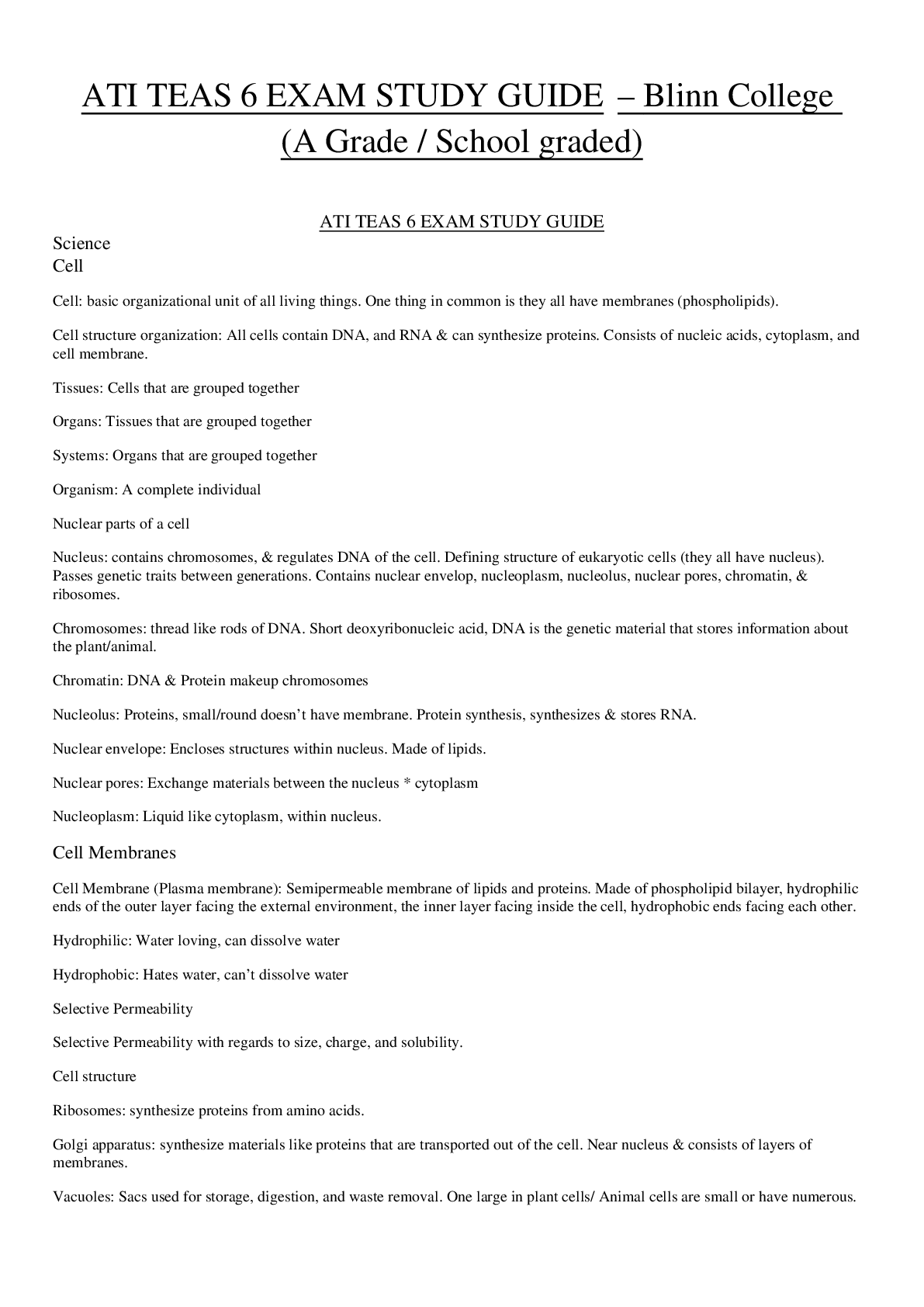


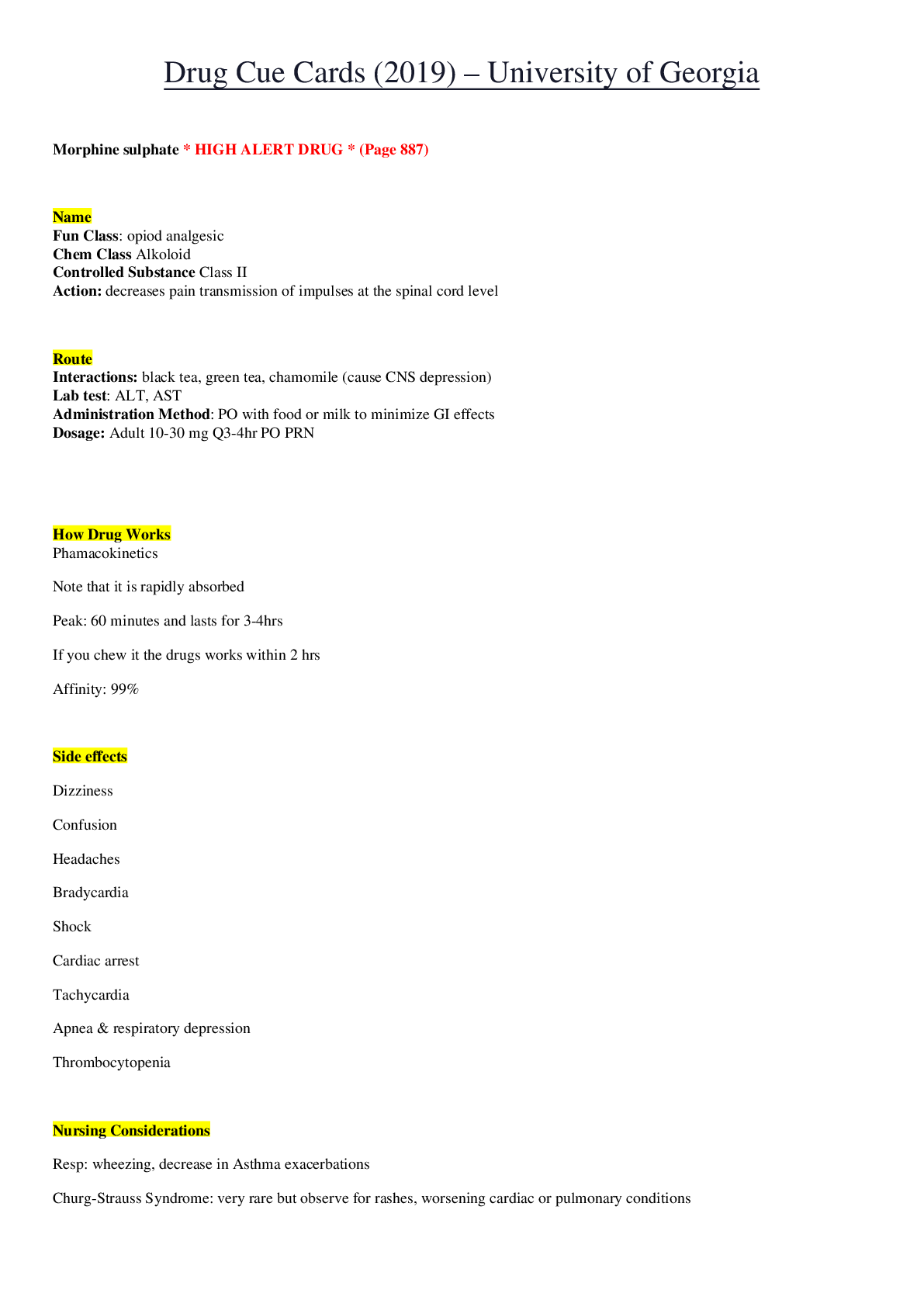


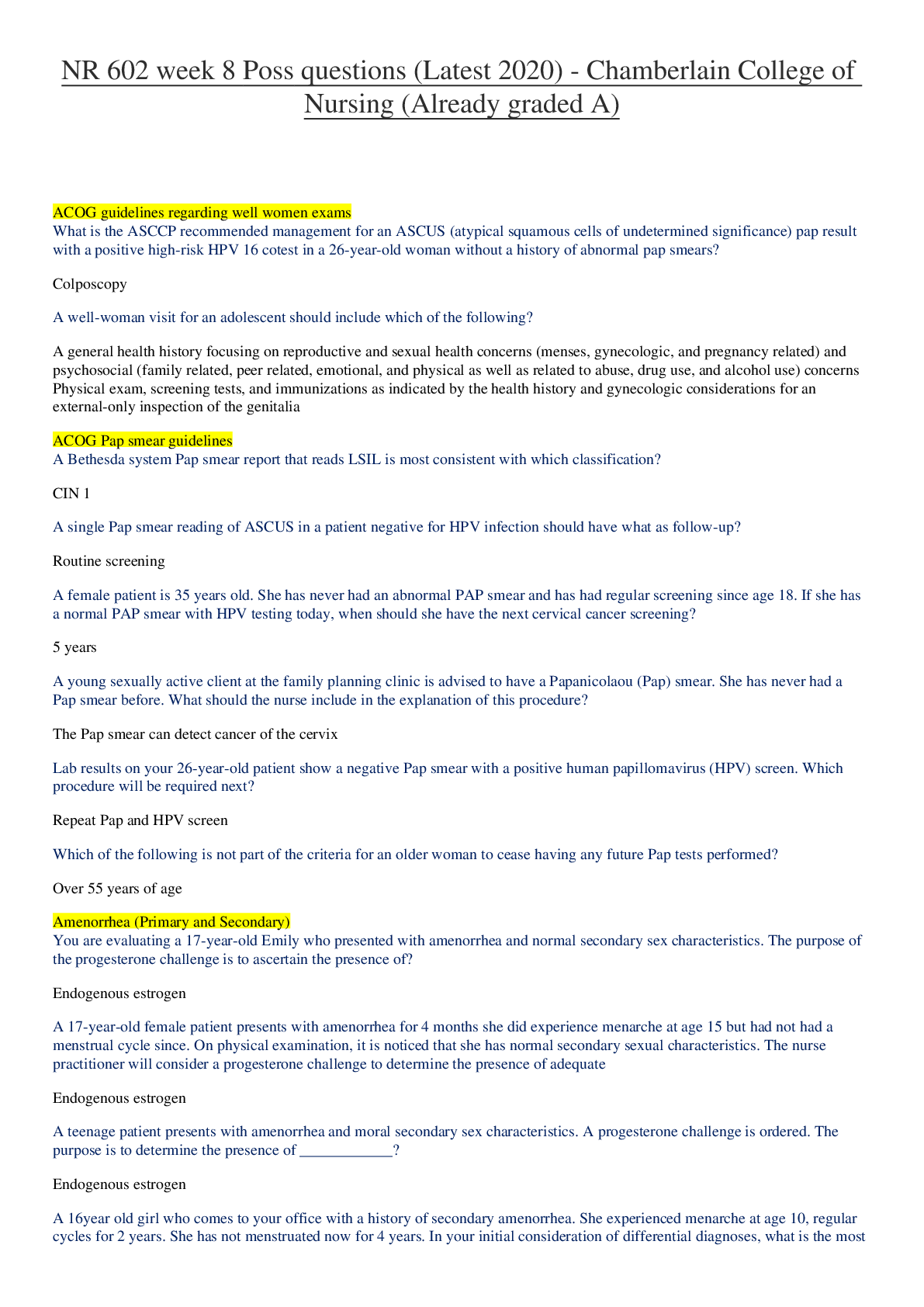
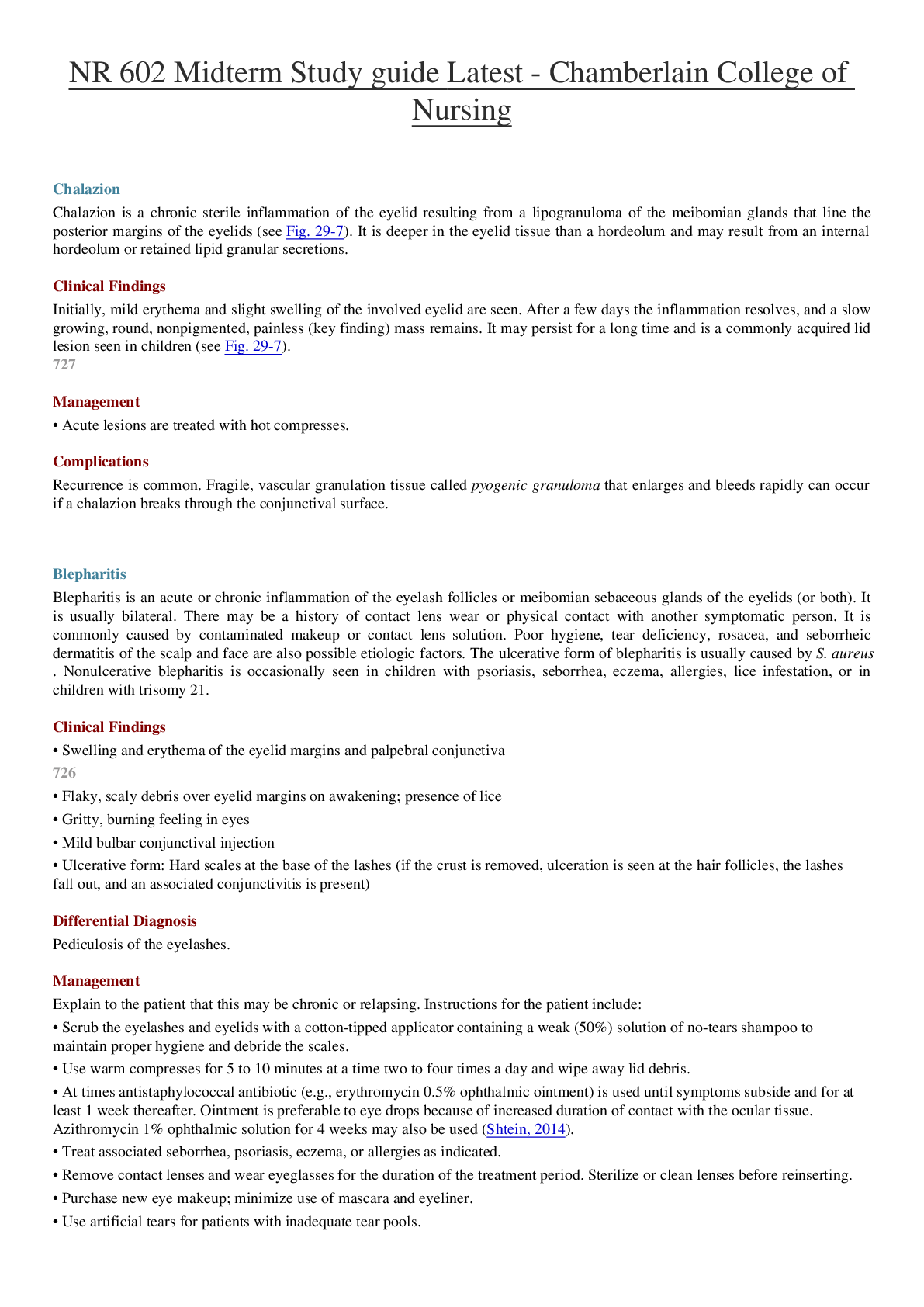
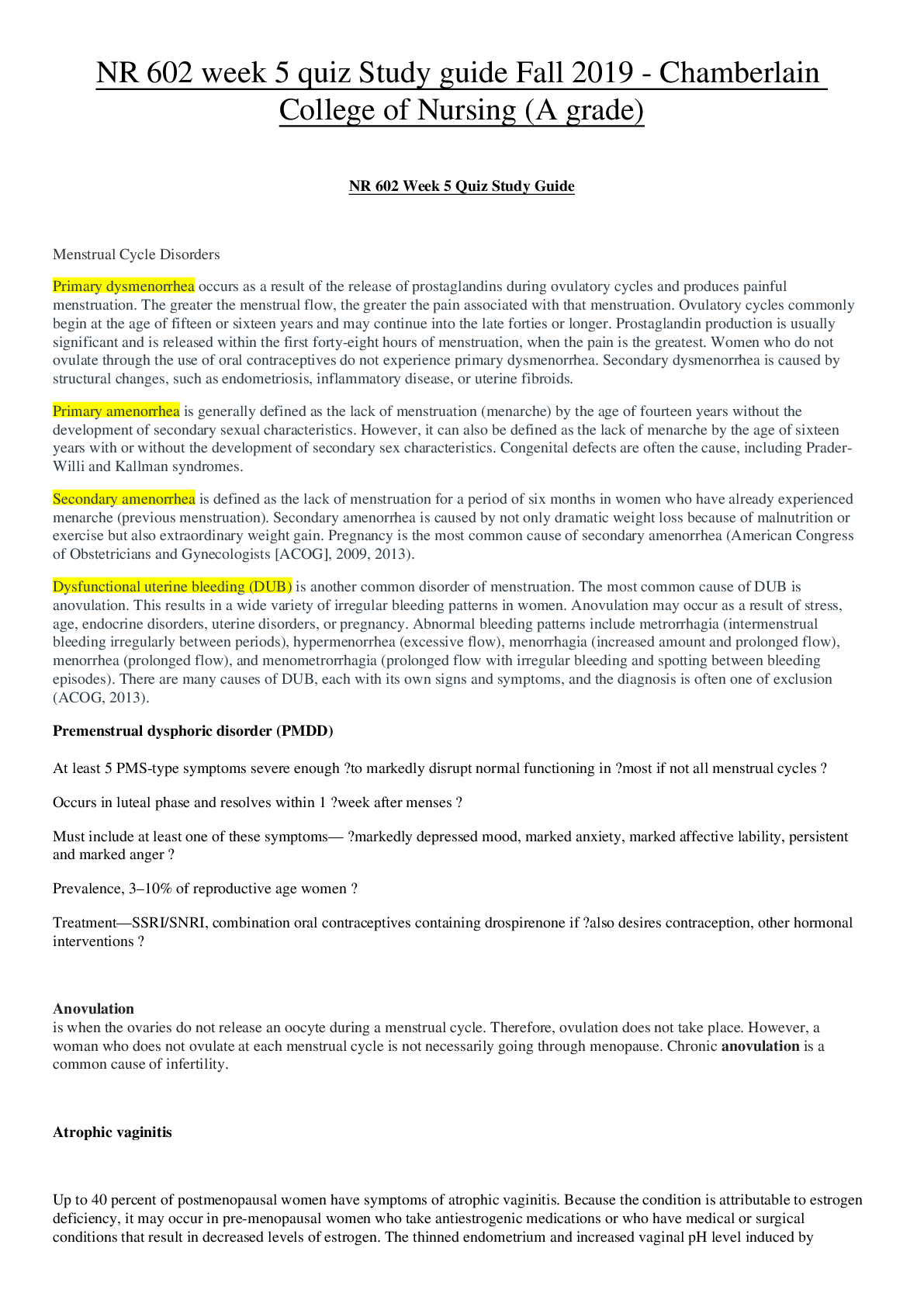
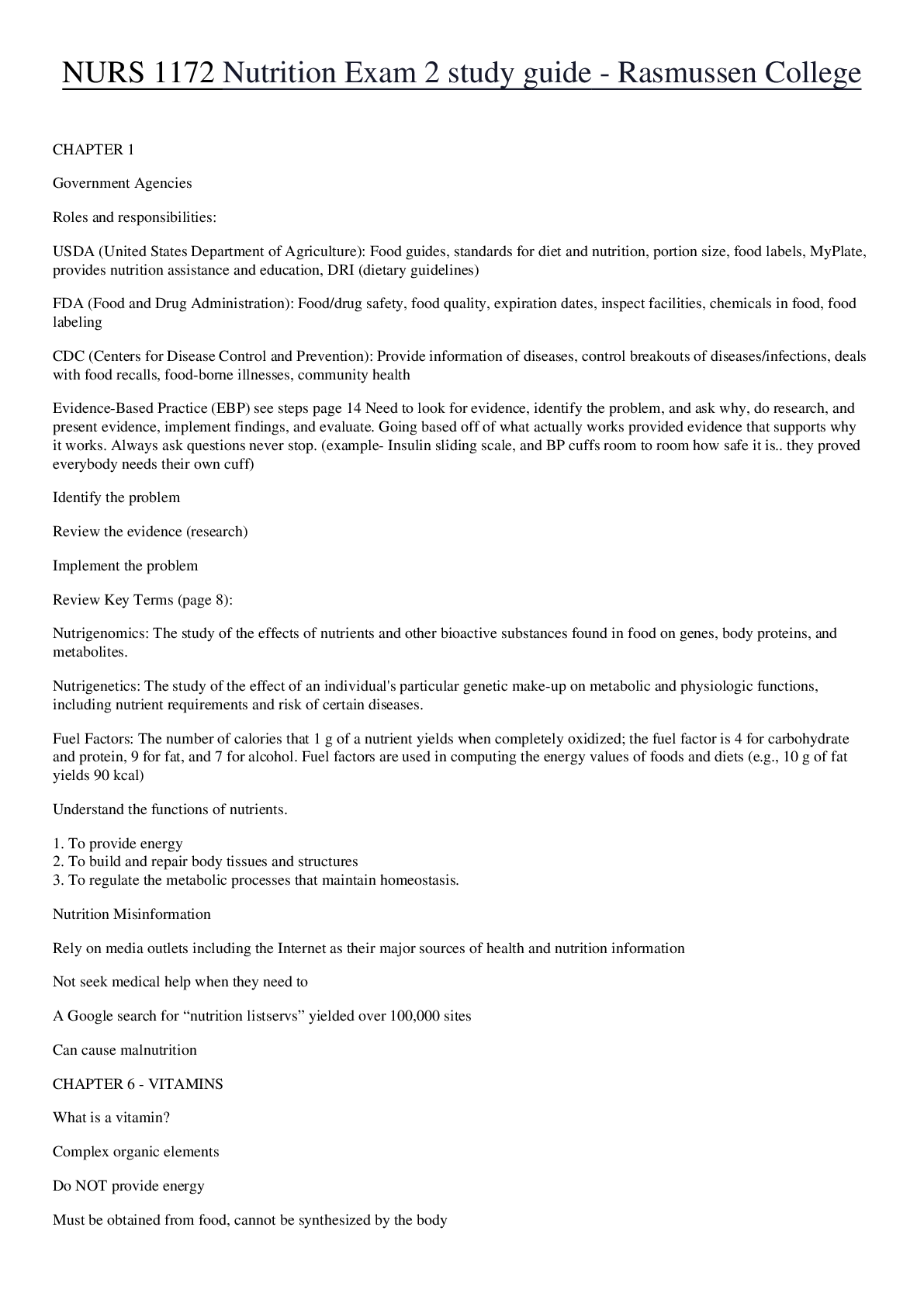

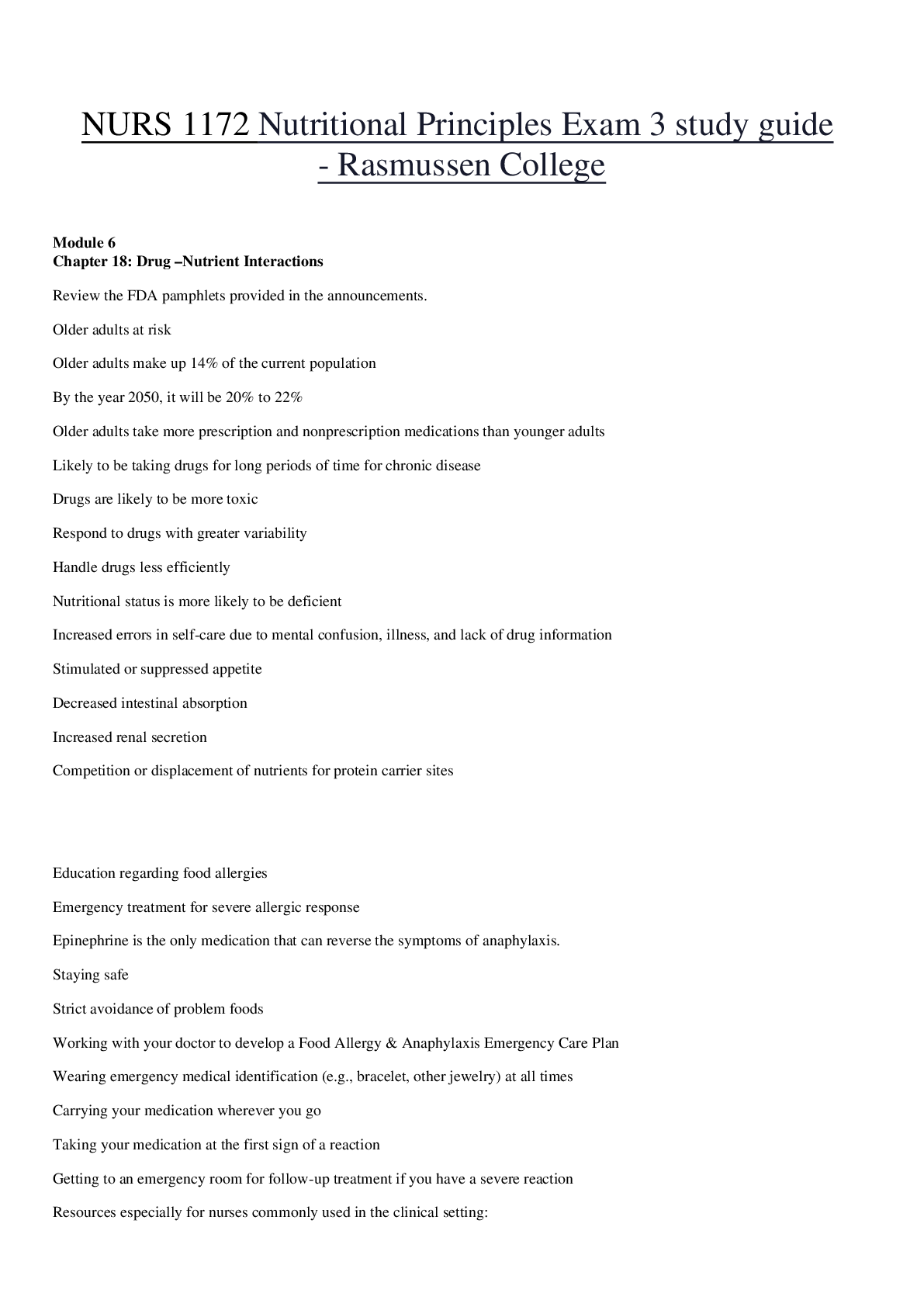

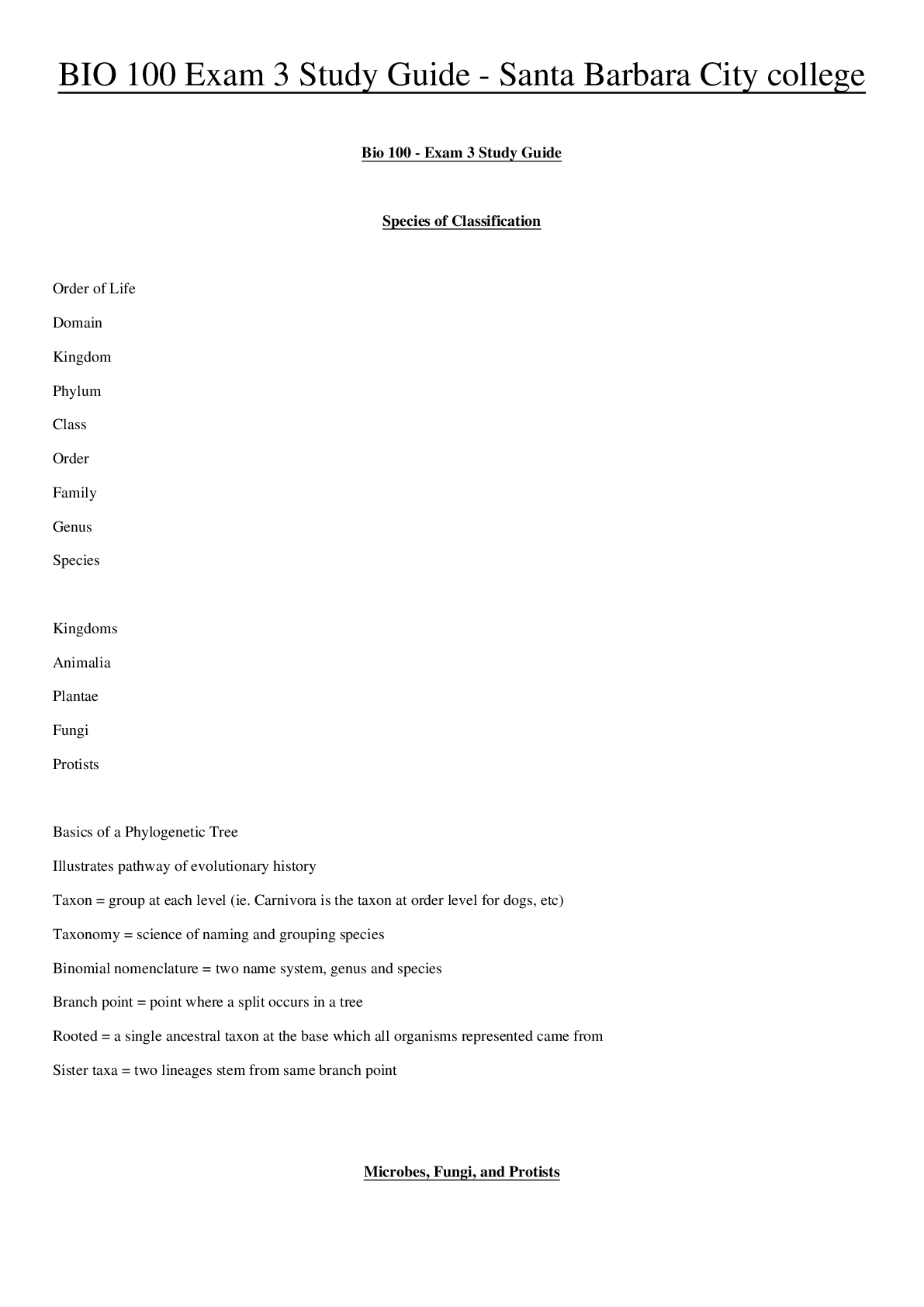
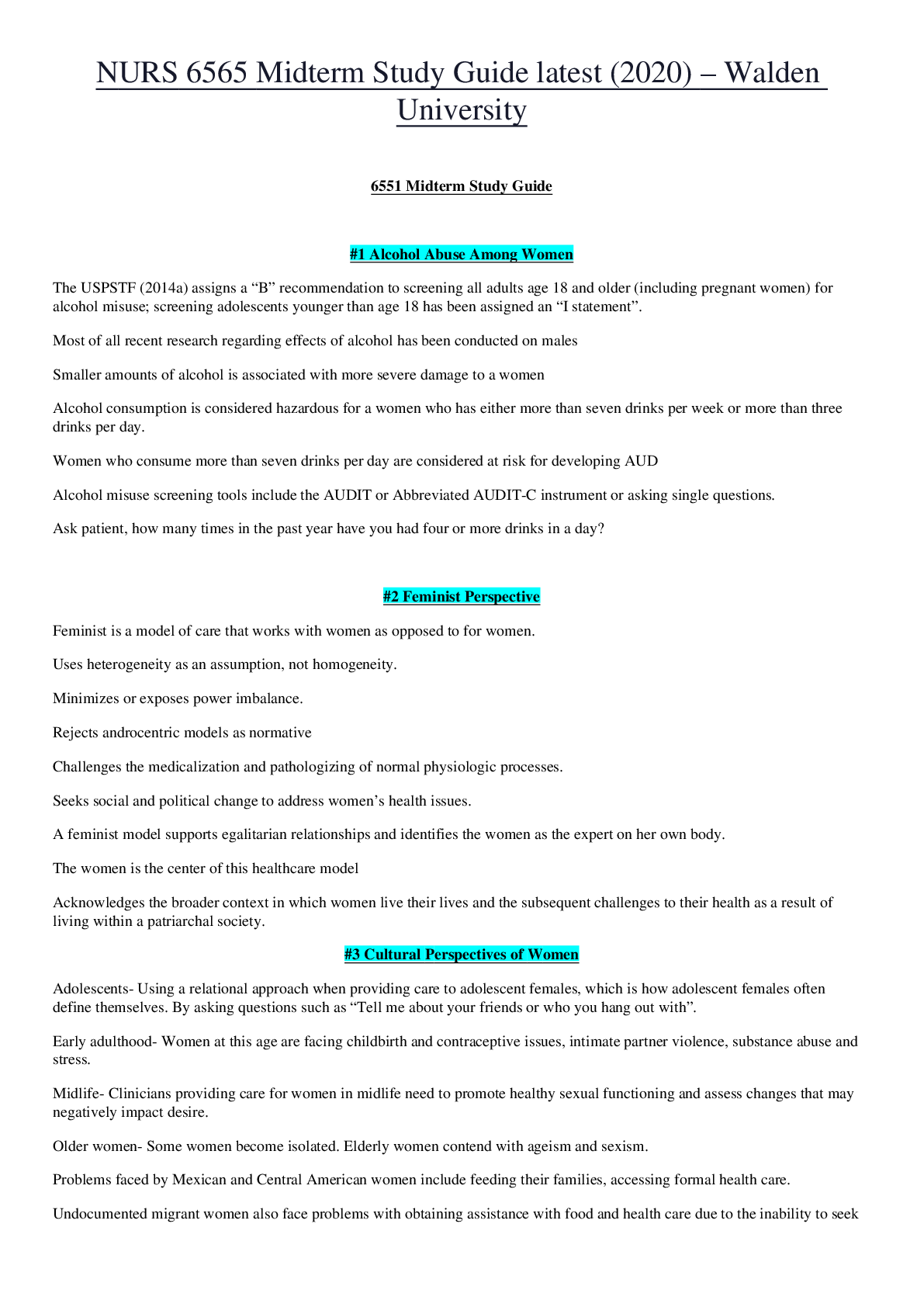
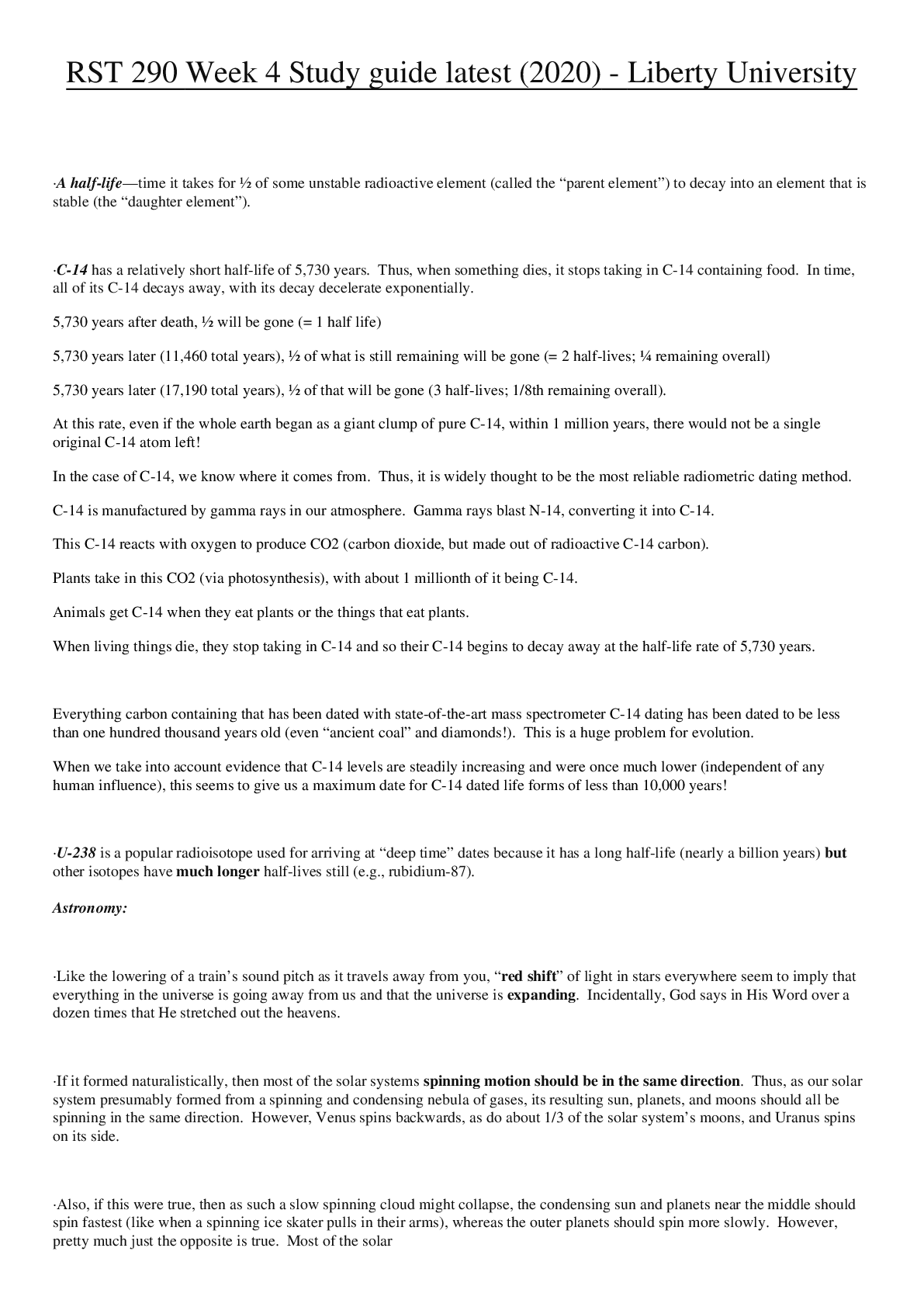


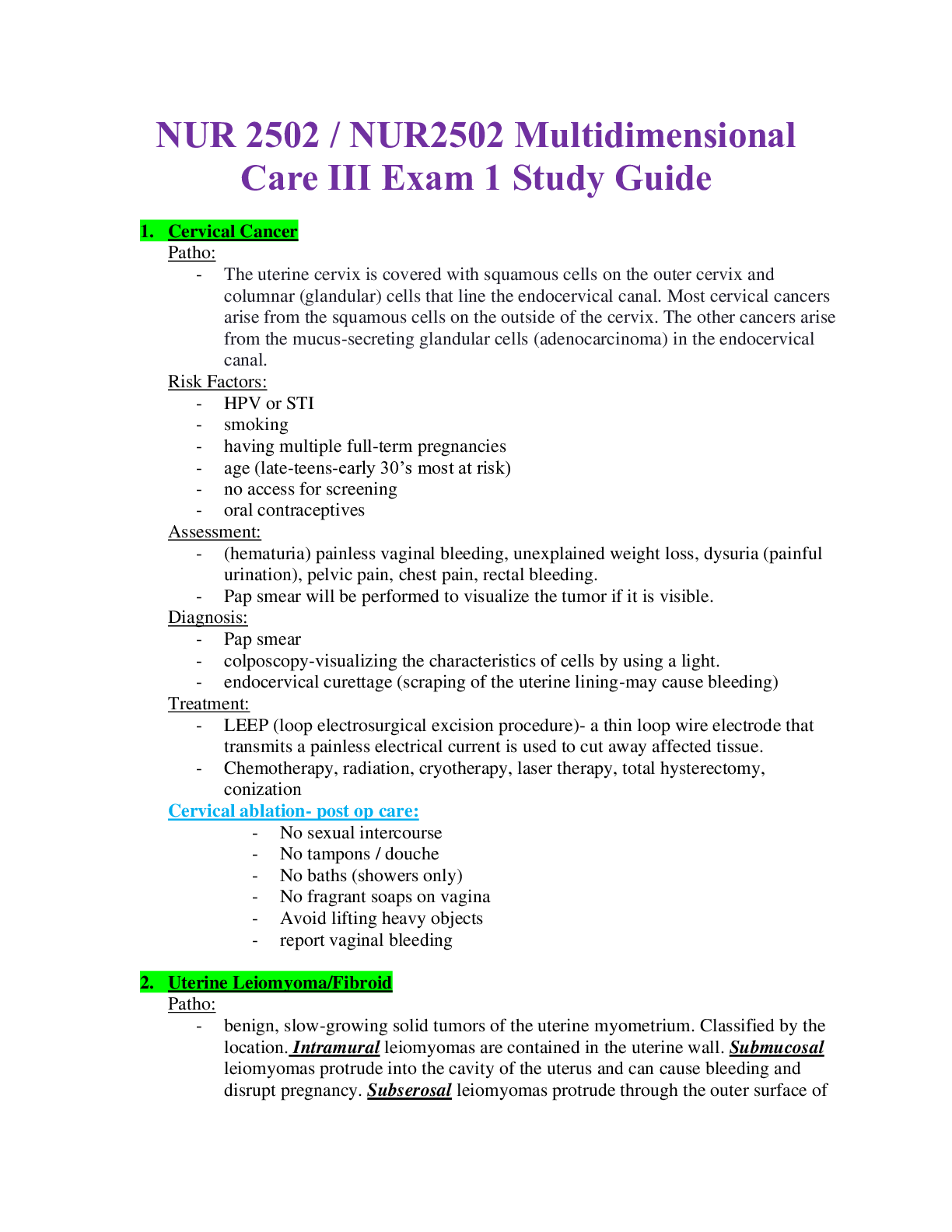

.png)
